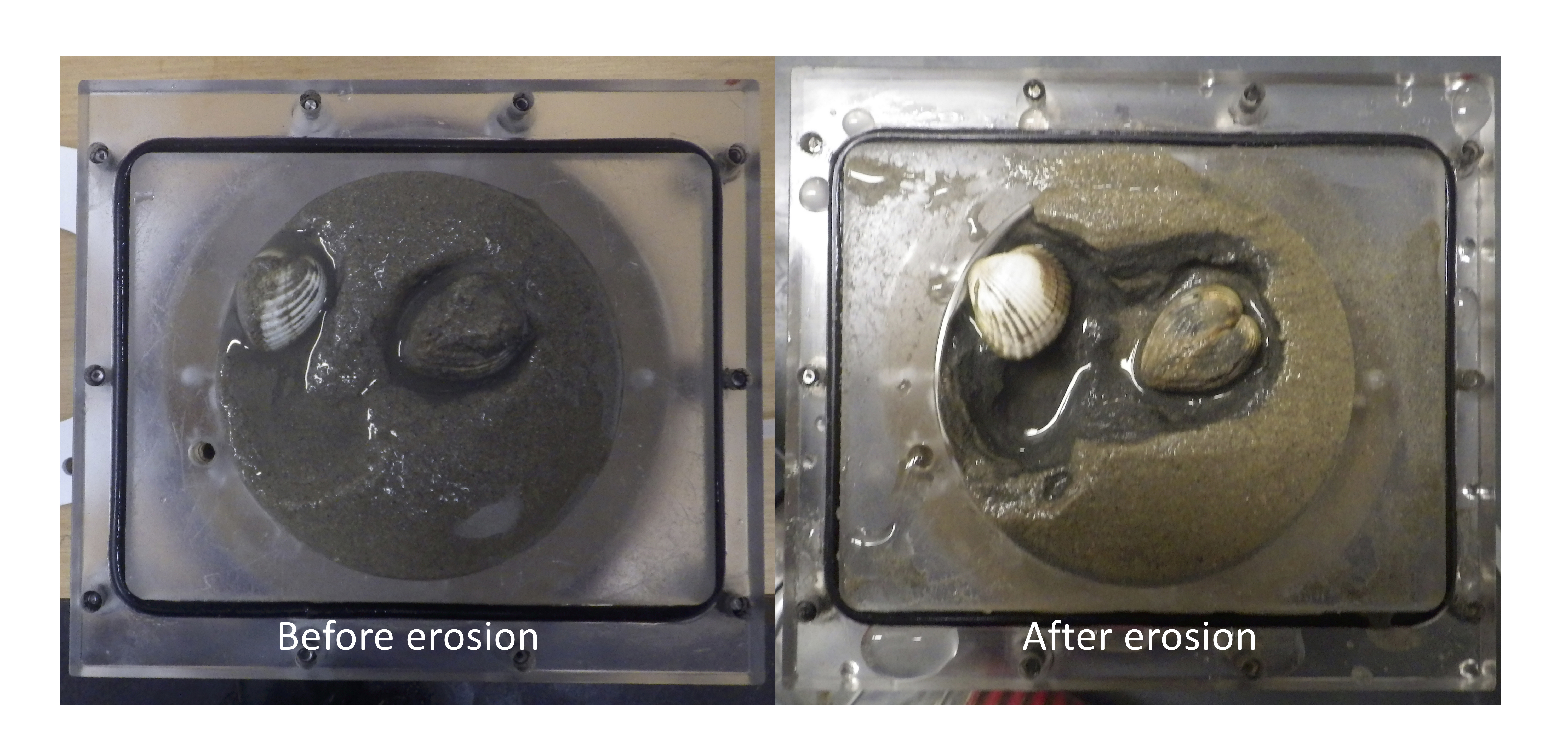Does parasitism influence sediment stability? Evaluation of trait-mediated effects of the trematode Bucephalus minimus on the key role of cockles Cerastoderma edule in sediment erosion dynamics. Annabelle Dairain, Olivier Maire, Guillaume Meynard, Francis Orvain. Science of The Total Environment. 2020. doi.org/10.1016/j.scitotenv.2020.139307
In coastal environments, bioturbators greatly influence the physical and biogeochemical properties of sediments with consequences for central ecological processes such as erosion dynamics. In addition to their direct impact on sediment stability, bioturbators can have an impact on sediment erosion processes by modulating the growth of microphytobenthic organisms that stabilise the surface layer of sediments. The direct and indirect influences of bioturbators on sediment dynamics depend on the magnitude of their activity and inherently on their physiological state. Bioturbators are infected by various parasites, which have a substantial impact on their physiology and behaviour. However, the knock-on effects of parasites on key ecosystem functions like sediment dynamics remain poorly studied. We conducted flume experiments to investigate the indirect influence of the trematode Bucephalus minimus parasitising the common cockle Cerastoderma edule on the dynamics of sandy sediments enriched or not with microphytobenthos (MPB). Cockles modified bed roughness, sediment surface erodibility and hence destabilised sandy sediments. In sediments not enriched with MPB, both unparasitised and parasitised organisms had a similar impact on the stability of sandy sediments. In contrast, parasitism slightly reduced the destabilisation effect of cockles in MPB-enriched sediments. The lower destabilisation effect of parasitised cockles was not here linked to a stabilisation effect of MPB. When standardised for length, parasitised cockles were lighter than unparasitised organisms. Weakened cockles may have had a lower bioturbation potential than unparasitised conspecifics. If so, the influence parasitised cockles had on sediment erodibility and sediment roughness may have been reduced. The absence of a parasitism effect on the dynamics of MPB-unenriched sediments remains nonetheless unclear.
BOREA contact : Dairain Annabelle, annabelle.dairain@unicaen.fr et Orvain Francis, francis.orvain@unicaen.fr
In coastal environments, bioturbators greatly influence the physical and biogeochemical properties of sediments with consequences for central ecological processes such as erosion dynamics. In addition to their direct impact on sediment stability, bioturbators can have an impact on sediment erosion processes by modulating the growth of microphytobenthic organisms that stabilise the surface layer of sediments. The direct and indirect influences of bioturbators on sediment dynamics depend on the magnitude of their activity and inherently on their physiological state. Bioturbators are infected by various parasites, which have a substantial impact on their physiology and behaviour. However, the knock-on effects of parasites on key ecosystem functions like sediment dynamics remain poorly studied. We conducted flume experiments to investigate the indirect influence of the trematode Bucephalus minimus parasitising the common cockle Cerastoderma edule on the dynamics of sandy sediments enriched or not with microphytobenthos (MPB). Cockles modified bed roughness, sediment surface erodibility and hence destabilised sandy sediments. In sediments not enriched with MPB, both unparasitised and parasitised organisms had a similar impact on the stability of sandy sediments. In contrast, parasitism slightly reduced the destabilisation effect of cockles in MPB-enriched sediments. The lower destabilisation effect of parasitised cockles was not here linked to a stabilisation effect of MPB. When standardised for length, parasitised cockles were lighter than unparasitised organisms. Weakened cockles may have had a lower bioturbation potential than unparasitised conspecifics. If so, the influence parasitised cockles had on sediment erodibility and sediment roughness may have been reduced. The absence of a parasitism effect on the dynamics of MPB-unenriched sediments remains nonetheless unclear.
BOREA contact : Dairain Annabelle, annabelle.dairain@unicaen.fr et Orvain Francis, francis.orvain@unicaen.fr




